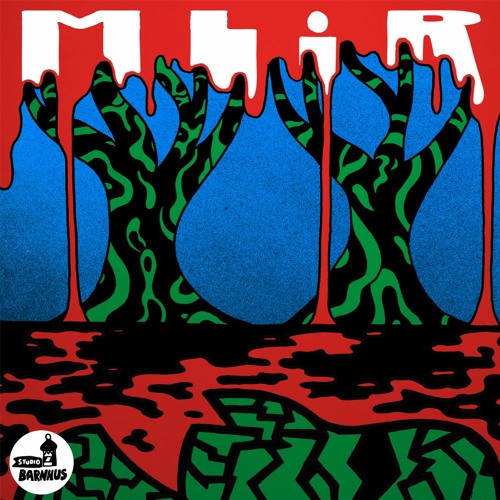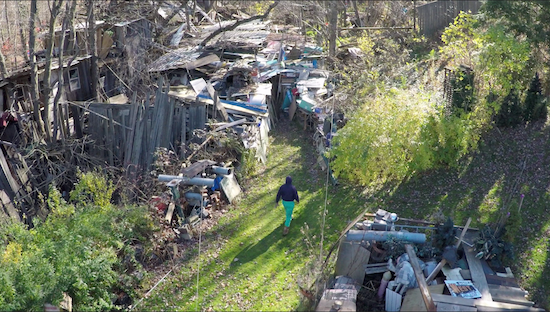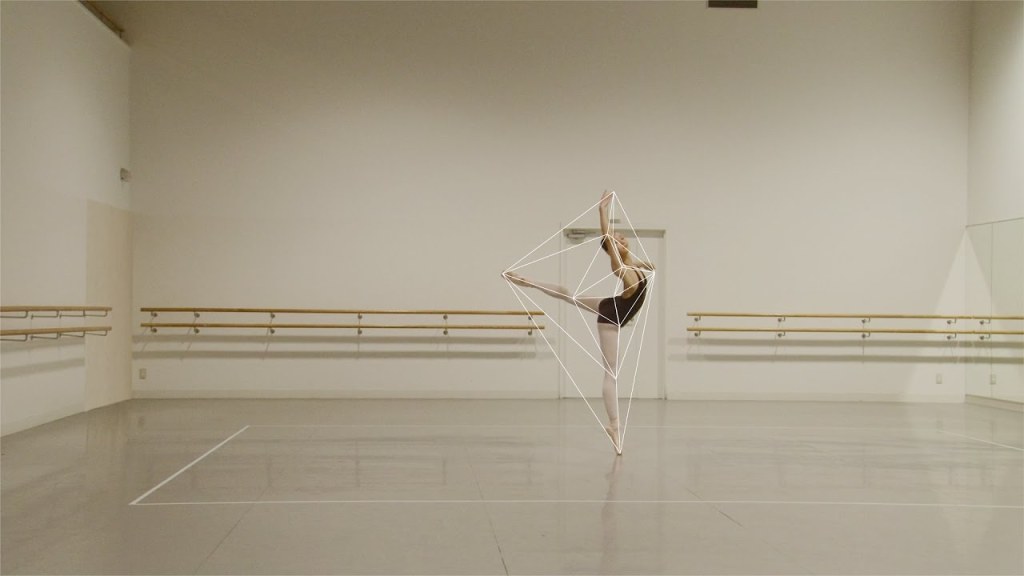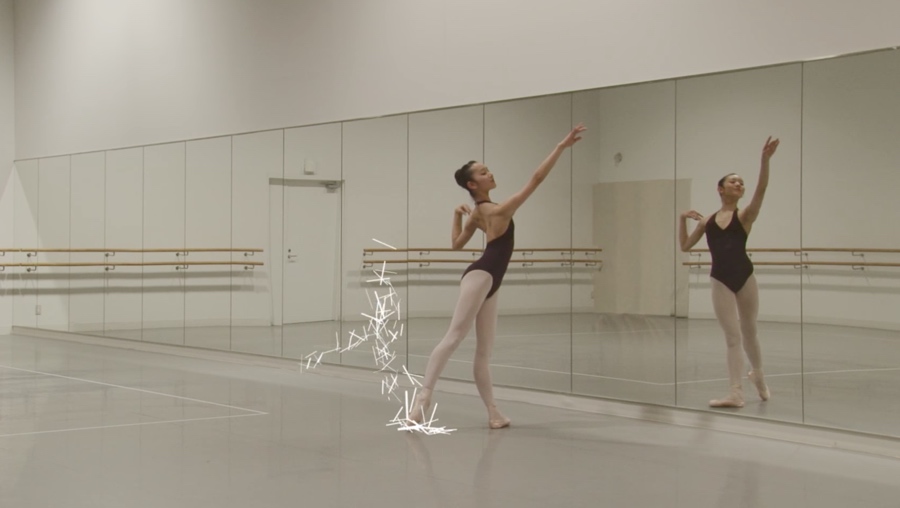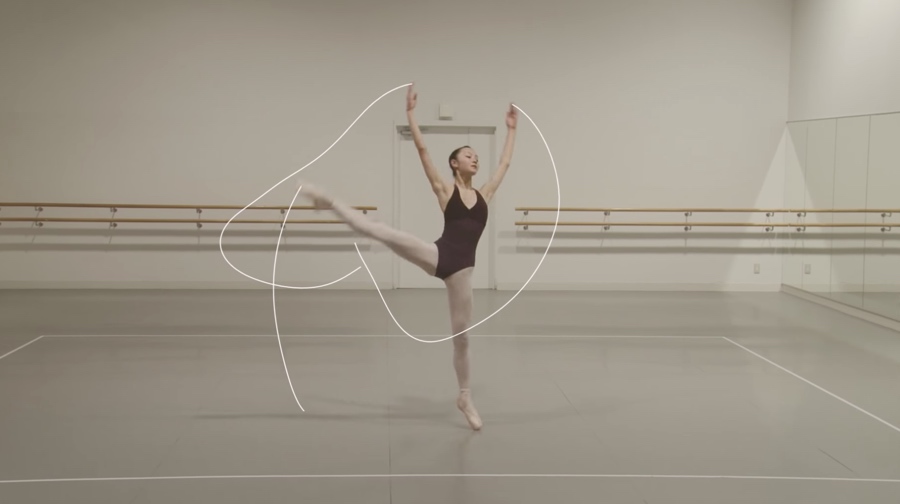- 6 years ago
-
MLiR stands for Modern Life is Rubbish, an utterly accurate and ironic name. Founded by the two absolutely crazy Swedes from outer Space, Marco Gegenheimer and Einar Christofferson. In 2016 the two lads broke through with the musical and mega hyped debut EP ”Swedish Lo-Life” on Studio Barnhus, the re-known and eclectic record label run by Axel Boman, Kornél Kovács and Petter Nordkvist.
An EP of 5 songs, featuring the big hit people with almost 300 000 plays on Spotify so far. Up next in 2017 for Marco and Einar is their 2nd installment for Studio Barnhus, an EP under the name ”Trans-World Junktion”. They also have EP:s coming early 2018 for UK label Banoffee Pies, Berlin based Lossless, a 3rd EP for Studio Barnhus and non 4/4 stuff for Magic Teapot Records. Apart from all this, the boys are also preparing a live show for next year where everyone will be able to see them shaking their asses and showing the world they’re here to stay to make you go bananas. Modern Life is Rubbish, and you know it!
Marco, nice to meet you and welcome to Art for Progress. MLiR it is the new project you have created, but your career started a long time ago. Please, could you tell us when did you start to produce music?
My interest to produce music started after having a 5.5 years break from DJ’ing in 2009. I then started working on an album for Ratio?music / Rush Hour (which got lost) and released several EP’s on Ratio?music / Rush Hour, Moodmusic and Perplex Recordings. I had a band called Factious Combo also when I was 16-19 years old which kinda sounded like a mix of Blur meets Sonic Youth.
How did you meet Einar, and why did you guys decide to call the project MLiR? What is the inspiration and story behind MLiR?
MLiR started with my buddy Einar Christoffersson back in 2012. We wanted to make something fresh and different, so we started doing experimental, cinematic and space traveling music before any dance music was done.
The name stands for “Modern Life is Rubbish” and was taken from Blur’s second album with the same title. They had a great start in 1991 with “Leisure” and the tour in Europe went very well, but went to hell on their US tour, as they got totally shitfaced every gig (pulling out cables etc) and so the critics thought they’d be a one hit wonder band. So in an era where the music scene was dominated by music from the US (Nirvana, Sonic Youth, Pearl Jam), they decided to go against the stream and do something super British with “Modern Life is Rubbish.” Their record label Parlophone / EMI thought they were crazy but the record became a commercial success, and the rest is history.
Our name is a political satire of the world and system we live in. It’s also very ironic as we of course love technology, but think that it’s important to have your own sound and go against classical rules within musical compositions. The name is also very on-point if we talk about how us humans live, glued to our phones, social media and forgetting the fact that all the answers to our problems is out there in mother nature.
As you know, every artist has another artist as a reference for inspiration. Would you like to mention some of the artists that inspire you to create that interesting and inspiring music?
Please, describe which are your influences.
That’s really hard to say but, to name a few artists and sounds that have influenced us here are some. Damon Albarn, Moodymann, DJ Koze, Sonic Youth, William Onyeabor and any psychedelic music with synthesizers, Tortoise, Jay Dilla, DJ Premier, The Radio Dept, cinematic music, music with stories and hidden messages. The list goes on and on.
How do you define your style?
Our style varies a lot so it’s really hard to describe but always fresh music, great to dance and romance to, with a lot to say to you.
Which facilities and machines do you use at your studio to produce the tracks? How do you describe MLiR creative process?
We try to use both analog gear and live instruments fused with drum machines etc. We use MPC and Ableton and use hard to find vinyl samples mostly, SH-101, Yamaha DX-7, Ableton Push etc.
The creative process of a song varies a lot. Sometimes we start with a kick drum only, sometimes with a sample we’ve found, it really changes a lot. Live music is something that’s really missing in electronic music, for example, and our aim will always be not make things sound too “loopy”, but instead humorous and fun yet still serious and timeless.
As your career started a long time ago. AFP would love to hear a run through your music works since you started.
Well I mentioned some of my older stuff. In 2015, Axel Boman convinced us to start doing some dance EP’s with MLiR, and so we did. Our first EP got released on Studio Barnhus in 2016. The second EP should’ve been out in June, but due to a sample licensing it’ll be out in the beginning of 2018.
In all your music career path, which is the best work you produced and you more feel proud of?
I would say MLiR’s first EP, what we’ll release next year and my EP for Ratio?music / Rush Hour called Inner Path Stories.
Are you working today in new projects you can tell us?
We’re currently working on a 3rd EP for them and new stuff for Lossless, Banoffee Pies and Magic Teapot Records. Magic Teapot Records is mine, Jens Ingelstedt and Dani Baughman’s online record shop, selling rare and pretty unknown records from all over the world. I also have a project with my friend Tapia called Son Dos. We have released stuff on Berlin’s Outcast Oddity, where I also have released another song called “G8,” an acid techno banger.
Tell us please, a nice story that you remember related to your music career.
Can’t really think of anything right now, but I’m really happy that people like Gilles Peterson, Laurent Garnier, DJ Koze, Andrew Weatherall and so many big names like the music that has been pushed out from me, MLiR and Son Dos.
Electronic music is a changing environment. What is your opinion about the evolution of the scene and to where this genre will progress?
I think these are really exciting times for electronic music, at the same time as it’s extremely sad to see how media/clubs/promoters use a style like for example techno and house to just make money, brainless and soulless. I hope to see more live music in the scene and it’s nice to see companies like Roland and others doing versions of some pretty expensive old analog synths and loads of new modular synths coming out everywhere as well. Absolutely love it!”
I have heard that you are planning to release a new label very soon. Please, would you mind to tell us something about it?
After having the perfect and free promotion / introduction to our followers, Magic Teapot Records have decided to start as a record label in 2018. We will release new music from friends, one or two vinyl reissues and compilations featuring discoveries we absolutely love and cherish, from rather unknown artists that we think need some recognition from the music scene itself and collectors all over the world.
Thank you very much your your attention, Marco. Congratulations to you and Einar Christofferson for MLiR. Your project is awesome! Let’s enjoy the vibrant and funny music video of MLiR’s “People” from their last EP “Swedish Lo-life EP” created by Einar.
You are welcome Nerea. Thanks also to Art for Progress for inviting me to talk about MLiR. Me and Einar are pleased to present our work here.
Please, remember to check MLiR’s Soundcloud and stay tuned to Magic Teapot Records new releases.
Nerea T. Ruiz
Latest News
- 6 years ago
-
Streetwear designer Gosha Rubchinskiy may have burst on the scene in 2008, his eponymous line is finally heating up, as it’s reported that athleisure is cooling down.
The former filmmaker, based in Moscow, melds a early-’90s Post-Soviet style of oversized sweatshirts with modern high-fashion suiting, demin and accessories. And the designer has also collaborated with brands, including Levi’s, on the iconic trucker jacket.
Image Credit: Collier Schorr
Despite being lumped in a “Post-Soviet youth culture” fashion category along with Demna Gvasalia and Lotta Volkova, Rubchinskiy rejects the comparison.
“I feel, myself, like an international artist,” he tells W Magazine. “Not like Russian, local thing,” adding, “I don’t like when people say—‘Oh, Gosha does the post-Soviet Russian thing.’ I think, no.”
He goes on to say “I try to speak about the current moment. That’s why I’m hanging always with young kids, because I want to see what’s happening in their heads. And I mix my emotions, my great memories, with what is cool and great for now.”
Can’t wait to see what this hypermodern designer has in store in 2018.
- 7 years ago
-
It’s a great time of year for New York’s documentary lovers, as the nation’s largest nonfiction film festival comes to town. The eighth edition of DOC NYC runs November 9 –16 with screenings and panels taking place at the IFC Center, SVA Theater and Cinepolis Chelsea. Among the fest’s 250 films and events are 11 feature-length works, from already released films such as Agnès Varda’s acclaimed Faces, Places to films making their world premieres, including Sam Pollard’s Maynard, a portrait of Atlanta’s first black mayor, and Julia Bacha’s Naila and The Uprising, about a Palestinian woman in Gaza who must make an impossible choice between love, family and freedom.
Among the festival’s 18 categories are two competition sections: Viewfinders, for distinct directorial visions, and Metropolis, dedicated to stories set in NYC. More than 350 filmmakers and special guests (often film subjects) will be in attendance for Q&As after most screenings and for DOC NYC PRO panels, including Steve Madden (for Maddman), Dan Rather (for Fail State) and Susan Sarandon (for Soufra).
Opening the festival is Greg Barker’s The Final Year, which follows key members of outgoing President Barack Obama’s administration; closing it is Lili Fini Zanuck’s Eric Clapton: Life in 12 Bars, about the life and career of the legendary guitarist. In between are docs of all sizes and shapes including centerpiece film Far from the Tree, Rachel Dretzin’s world premiere adaptation of Andrew Solomon’s book, and Errol Morris’s Wormwood, about the 1953 death of a CIA agent. (The director is receiving DOC NYC’s Visionaries Lifetime Achievement Award.)
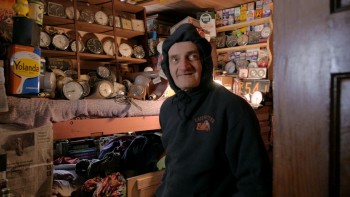 Mole Man (Viewfinders) is Guy Fiorita’s film about Ron Heist, a 66-year-old autistic man who has built 25 interconnected structures in his rural Pennsylvania backyard. Clearly an architectural genius of sorts (he has never used nails, mortar or even measuring tools), Heist lives to build things and his creations have drawn visitors from all over western Pennsylvania, giving him something of a social life. He is also completely dependent on his 90-year-old mother, on whose property he has created his labyrinthine realm. At the heart of Mole Man is the disagreement between Ron’s siblings and his friends. His brother and sister, understandably concerned about the future, believe that Ron should vacate the property and perhaps live in a group home. Meanwhile a group of friends look for a miraculous solution that would enable Ron to stay on the property and continue living in the only reality he has ever known. (World Premiere)
Mole Man (Viewfinders) is Guy Fiorita’s film about Ron Heist, a 66-year-old autistic man who has built 25 interconnected structures in his rural Pennsylvania backyard. Clearly an architectural genius of sorts (he has never used nails, mortar or even measuring tools), Heist lives to build things and his creations have drawn visitors from all over western Pennsylvania, giving him something of a social life. He is also completely dependent on his 90-year-old mother, on whose property he has created his labyrinthine realm. At the heart of Mole Man is the disagreement between Ron’s siblings and his friends. His brother and sister, understandably concerned about the future, believe that Ron should vacate the property and perhaps live in a group home. Meanwhile a group of friends look for a miraculous solution that would enable Ron to stay on the property and continue living in the only reality he has ever known. (World Premiere)
Screening Friday, Nov. 10, 7:30 pm at Cinepolis Chelsea, 260 W 23rd St.; and Monday, Nov. 13, 12:15 pm at IFC Center, 323 6th Ave.
In person: Guy Fiorita, film subjects
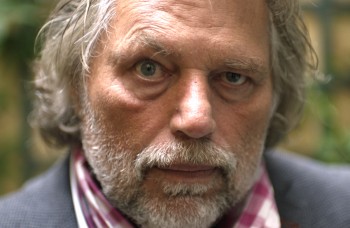 The Iconoclast (True Crime) is King Adz’s portrait of world-renowned art connoisseur and thief Michel Van Rijn. The charismatic Dutchman, possibly a descendant of Rembrandt, has had an action-packed life, including seven marriages and involvement in many art smuggling and forging operations, as well as art recovery work with the FBI, MI6 and other law enforcement agencies. The son of a Jewish resistance fighter, Van Rijn also worked with Israel’s Mossad and makes a shocking, not-altogether-outlandish admission about his role in the apprehension of infamous Nazi Josef Mengele. Of course, how much of what he says is true in his many interviews and interactions with Adz, is part of the film’s mystery. (World Premiere)
The Iconoclast (True Crime) is King Adz’s portrait of world-renowned art connoisseur and thief Michel Van Rijn. The charismatic Dutchman, possibly a descendant of Rembrandt, has had an action-packed life, including seven marriages and involvement in many art smuggling and forging operations, as well as art recovery work with the FBI, MI6 and other law enforcement agencies. The son of a Jewish resistance fighter, Van Rijn also worked with Israel’s Mossad and makes a shocking, not-altogether-outlandish admission about his role in the apprehension of infamous Nazi Josef Mengele. Of course, how much of what he says is true in his many interviews and interactions with Adz, is part of the film’s mystery. (World Premiere)
Screening Thursday, Nov. 16, 7:15 pm at Cinepolis Chelsea.
In person: King Adz
 Soufra (International Perspectives) follows a group of women in Lebanon’s Bourj el-Barajneh refugee camp as they attempt to improve their families’ lives by forming a catering company. Sensitively directed by Thomas Morgan, the film gives us rare access into the day-to-day lives of people—mostly Palestinian and Syrian—who are stuck in a world they are unable to escape, barred from working or living outside. Led by the indefatigable Mariam Shaar, who has spent her entire life at Bourj el-Barajneh, the group engage one of the few activities accessible to them —cooking and baking, which gives them a communal activity as well as a means to improve their lot. With the help of a sympathetic lawyer, Shaar struggles to navigate the Lebanese legal system and obtain the necessary permits to operate a food truck. (North American Premiere)
Soufra (International Perspectives) follows a group of women in Lebanon’s Bourj el-Barajneh refugee camp as they attempt to improve their families’ lives by forming a catering company. Sensitively directed by Thomas Morgan, the film gives us rare access into the day-to-day lives of people—mostly Palestinian and Syrian—who are stuck in a world they are unable to escape, barred from working or living outside. Led by the indefatigable Mariam Shaar, who has spent her entire life at Bourj el-Barajneh, the group engage one of the few activities accessible to them —cooking and baking, which gives them a communal activity as well as a means to improve their lot. With the help of a sympathetic lawyer, Shaar struggles to navigate the Lebanese legal system and obtain the necessary permits to operate a food truck. (North American Premiere)
Screening Sunday, Nov. 12, 1:45 pm at SVA Theatre, 333 W. 23rd St.
In person: Thomas Morgan and executive producer Susan Sarandon
 The Pink House (International Perspectives) is Sascha Ettinger Epstein’s doc about the oldest working brothel in the former gold-mining town of Kalgoorlie, in Western Australia. In operation since 1904, when Hay Street was awash with similar businesses, Questa Casa is run by genteel octogenarian Carmel Galvin, who tends the garden when she’s not taking calls from potential customers or giving tours of the facility to tourists. She also mothers her one remaining worker, the ageing, troubled BJ, who has been at the Pink House for decades. The film focuses on the unusual relationship between the two women, as well as the history of the former “wild west” town and Hay Street, now overrun with newfangled “Asian houses” that threaten to put Carmel and Questa Casa out of business. (International Premiere)
The Pink House (International Perspectives) is Sascha Ettinger Epstein’s doc about the oldest working brothel in the former gold-mining town of Kalgoorlie, in Western Australia. In operation since 1904, when Hay Street was awash with similar businesses, Questa Casa is run by genteel octogenarian Carmel Galvin, who tends the garden when she’s not taking calls from potential customers or giving tours of the facility to tourists. She also mothers her one remaining worker, the ageing, troubled BJ, who has been at the Pink House for decades. The film focuses on the unusual relationship between the two women, as well as the history of the former “wild west” town and Hay Street, now overrun with newfangled “Asian houses” that threaten to put Carmel and Questa Casa out of business. (International Premiere)
Screening Wednesday, Nov. 15, 7:30 pm and Thursday, Nov. 16, 3 pm, at the IFC Center
In person: Sascha Ettinger EpsteinClick here for more information and a full schedule of DOC NYC screenings and other events.
—Marina Zogbi
- 7 years ago
-
Today, in the field of Contemporary Music, artists empower themselves using technology. Combining IT and engineering with the arts, they are able to create interesting artworks, performances and new instruments using tools for algorithmic composition and advance programming, electronics and audio visual techniques.
This awesome granular marble’s symphony, combines sensors to capture data and experimental software to create beautiful sounds with marbles. The contact microphones are connected to the glasses to capture the sound of the marbles knocking the glass with perfect accuracy.
The name of this project is Untitled Samek and as the author Federico Dal Pozzo describes it as a study about the emptiness of time that sounds for the eyes.
It’s experimental electro-acoustic music using granular synthesis made with the sound of a marble spinning on a bohemian glass, combined with audiovisual painting. It’s such a symphony and definitely delights the audience!
Nerea T. Ruiz
- 7 years ago
-
Ballet Rotoscope is an experimental short film made in 2011 that connects ballet with technology. By empowering the natural beauty of ballet and utilizing physical computing, the concept adds value to the real-time action and performance.
The artists and researchers involved in the project, have created a relationship between geometric shapes with an animation technique known as rotoscope which was invented in 1905 by Max Fleischer. The object’s contours are traced and controlled by an algorithm that brings a mathematical layer to the natural movements of a ballerina.
The awesome result is the ballerina dances while she draws perfect geometry. The joints on her body are traced with a computer –generated rotoscope animation technique created by mathematical methods.
In the process, each of the steps of the ballerina were tracked with accuracy to translate and synthesize it with a vectorial animation.
Rotoscope technique is normally used in motion pictures to make realistic cartoons, but artists use it to generate an abstract animation of shapes that follow the movements of a ballerina. Therefore, this project makes sense in how to bridge the gap between arts and technology and create new concepts of beauty.
This great artwork was created in Keio University of Japan, and the proposal intends to be an interaction between live performance and animation and new ways of expression. This was developed by the EUPHRATES Group, founded by the students of Masahiko Sato Laboratory.
Nerea T. Ruiz

